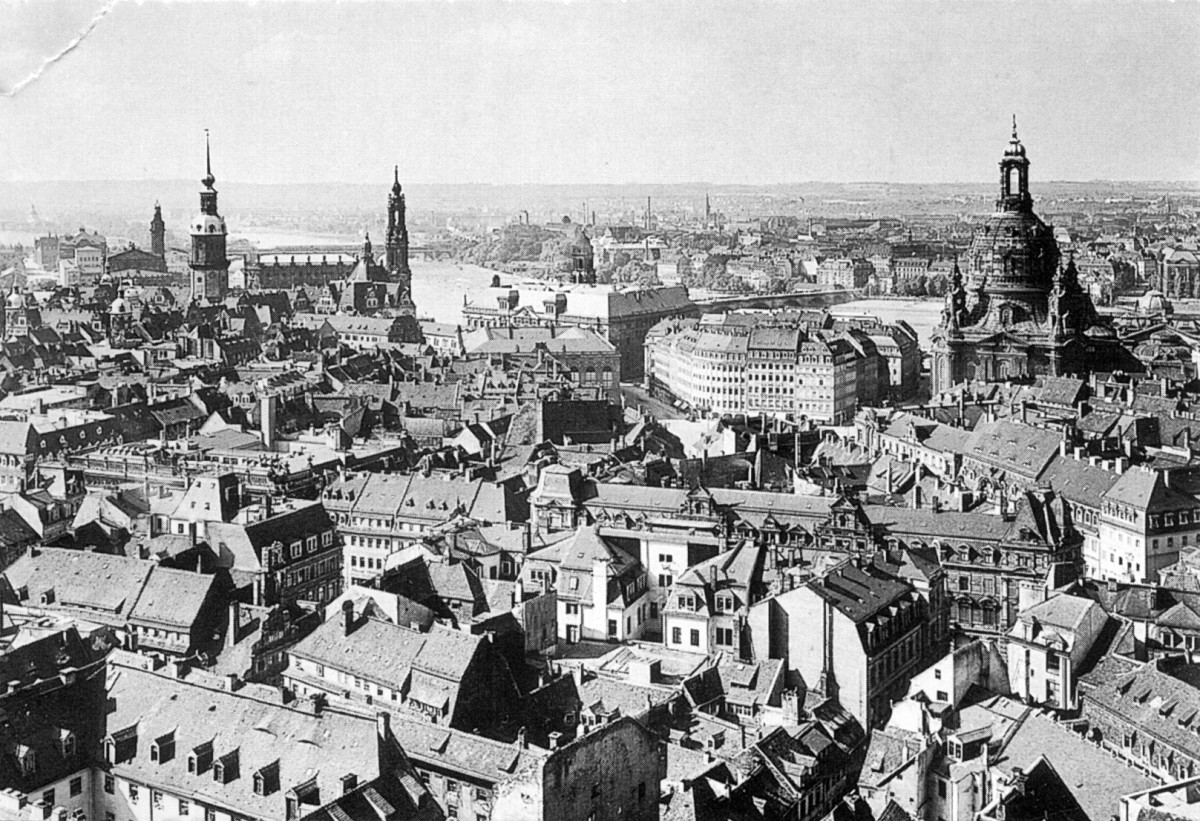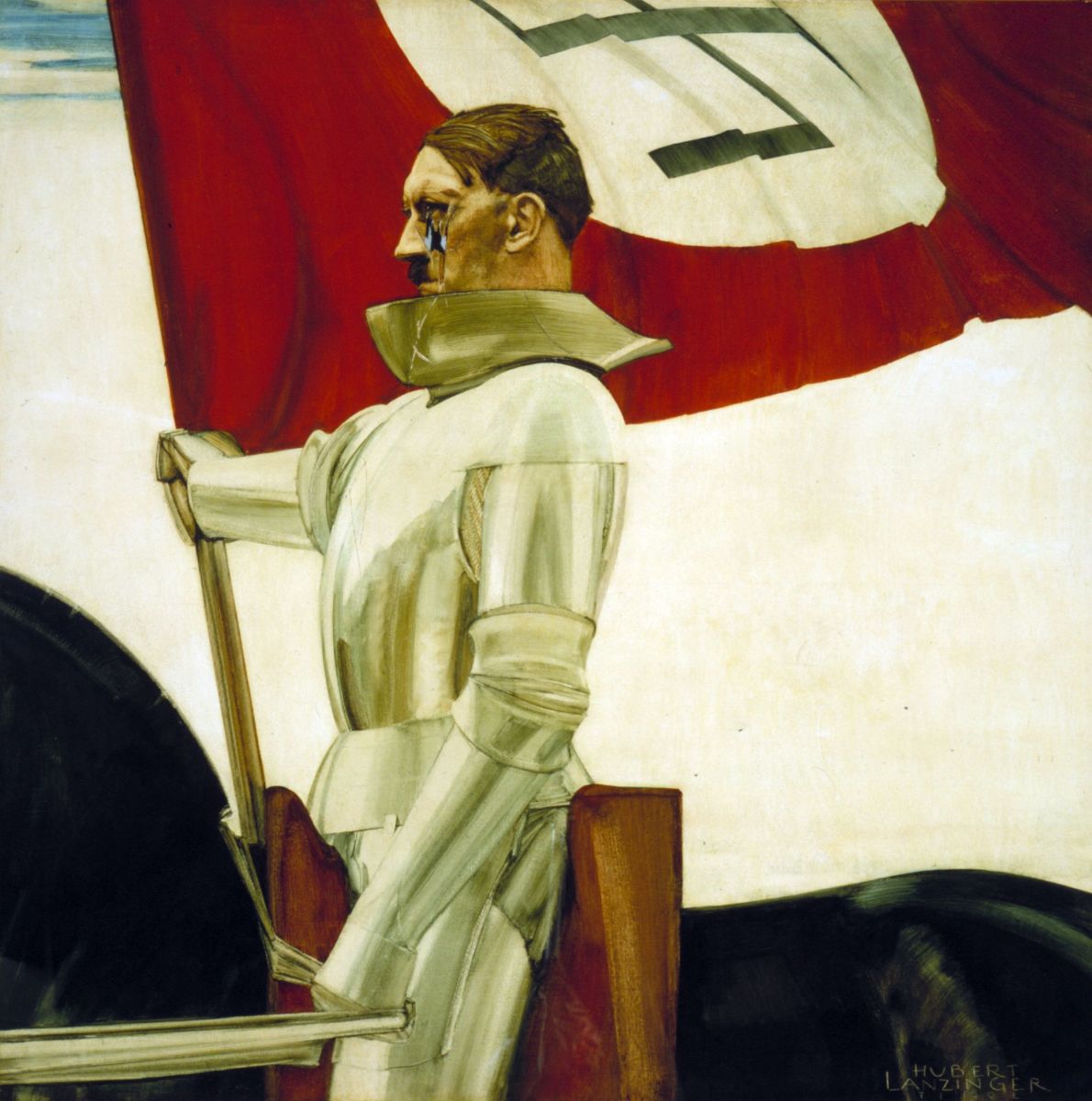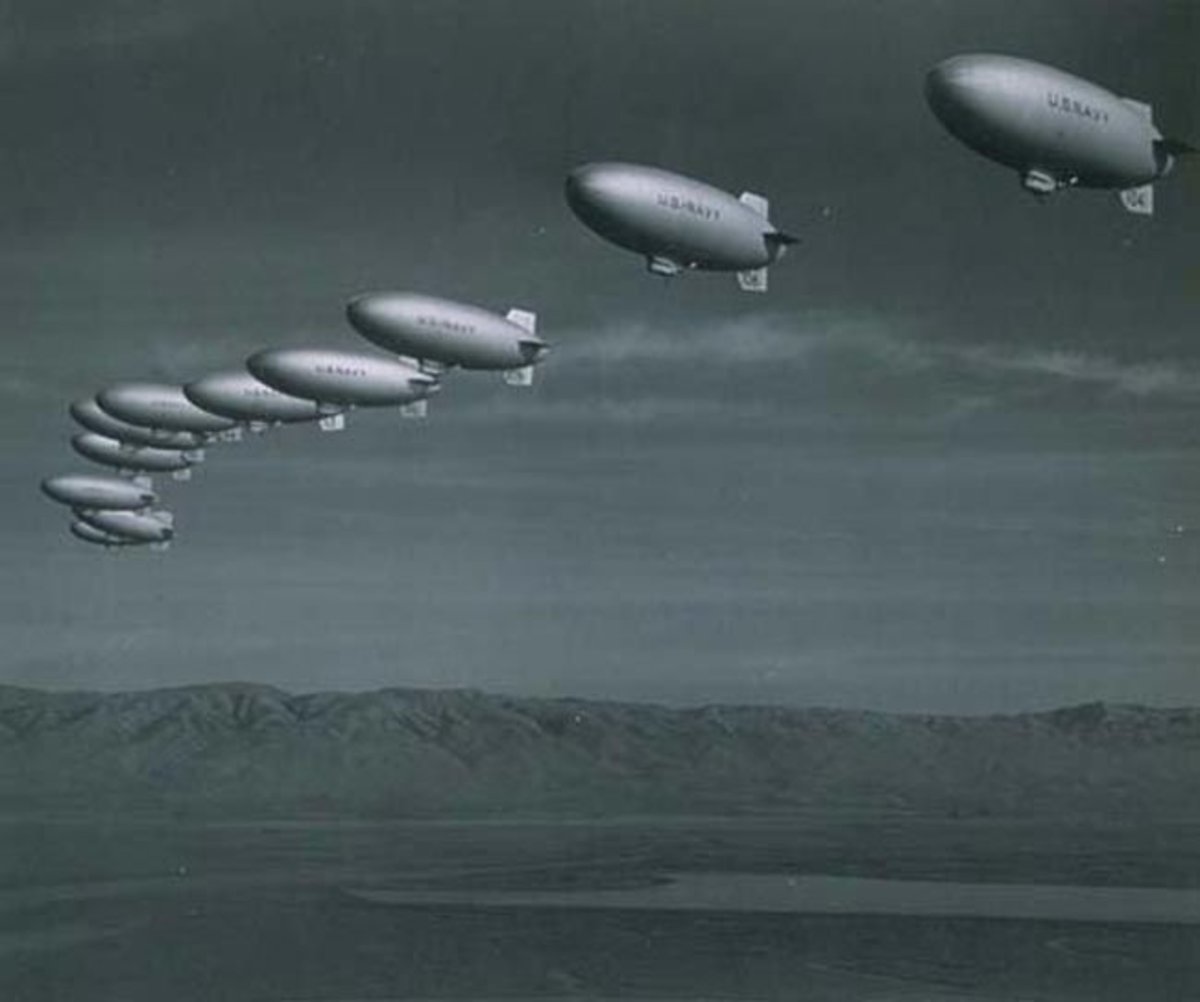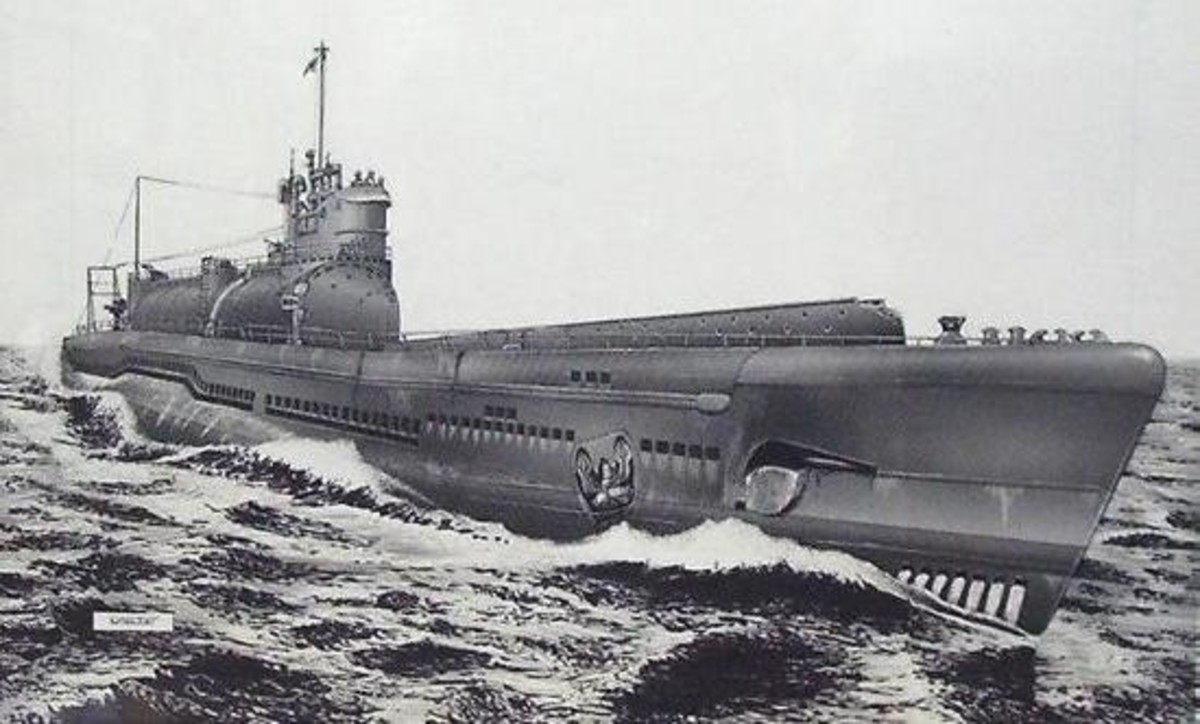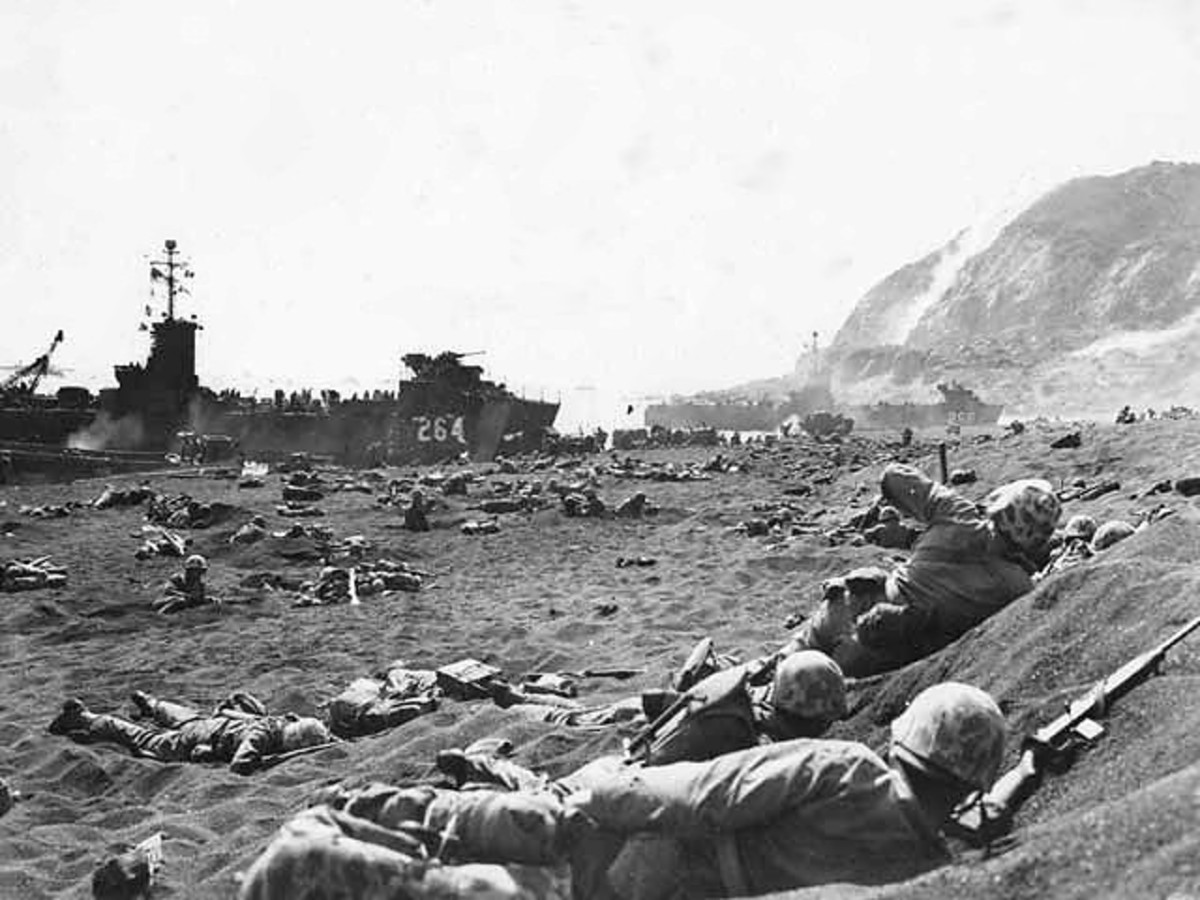- HubPages»
- Education and Science»
- History & Archaeology»
- History of the Modern Era»
- Twentieth Century History
Living through the Blitz - how British civilians sheltered from the bombs

Less than a lifetime ago, the bombs fell
WIthin living memory, British people all over the country feared the constant rain of death that fell from the skies, day and night.
The country was at war, with Adolf Hitler's Third Reich. The occupied countries of France, Belgium, Holland and Denmark provided handy bases for the Luftwaffe's bombers.
And those bases were used - millions of tons of bombs were dropped, mostly on the cities and large towns, but also randomly across the country.
We still see the impact in Britain today. A few times a year, workmen digging a hole for a new building, railway or road come across an unexploded bomb, which has to be made safe.
The bombing raids were called "The Blitz". This is from the German word "Blitzkrieg", meaning "lightening war".
Blitzkrieg was the tactic the German armed forces used successfully when invading Poland, France, Denmark, Norway, and other European countries.
It involved using the air force and ground forces together, to move fast across the country and overwhelm enemy forces. It was terrifying, destructive, and very, very effective.
This article is the story of how those brave men, women and children protected themselves from the bombs, fell victim to them, and lived their lives despite them. And how they came through the war victorious, despite the Blitz.
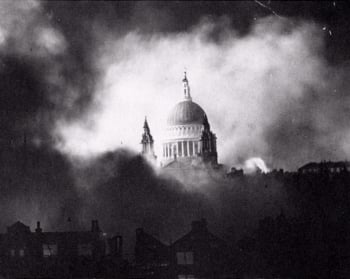
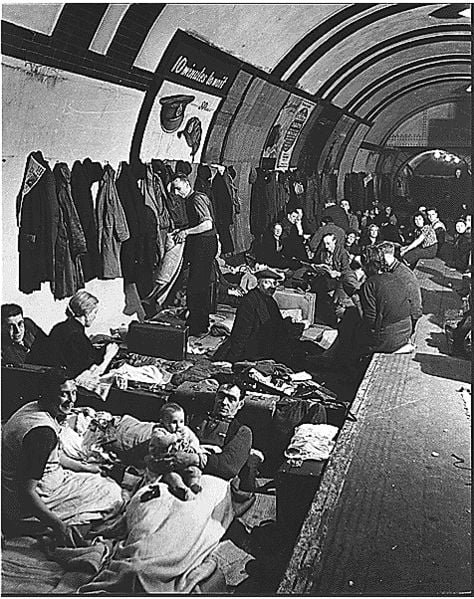
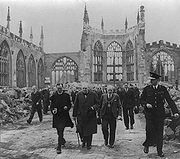
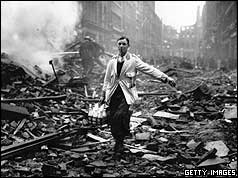
What was the Blitz?
The Blitz was a name given in general to the bombing of Britain during the Second World War, and in particular to intensive individual bombing campaigns directed at different cities.
The Blitz started on the 7th September 1940, and London was bombed that night, and every single following night for 57 days.
It continued in London and across the country and was initially intended to soften Britain up for an invasion. Operation Sealion, the Nazi invasion plan, included softening the population up by bombing them to smithereens.
There had been some bombing of Britain during the First World War by Zeppelin raids.
In the inter War period, the authorities became increasingly aware that bombing could be extremely dangerous to a civilian population.
The destruction of Guernica, in Spain, by German aeroplanes revealed only too well the high costs which could be paid.
By the end of May 1941, in London alone, 22,000 civilians had been killed in the Blitz and over a million houses destroyed or seriously damaged.
In the War as a whole from beginning to end, nearly 52,000 civilians died from bombing raids. Then there came the “Doodle Bugs” V1 and V2 flying bombs and rockets. Those killed a further 9,000 civilians, all in London and the south-east.
The original raids starting on the 7th September 1940 were mostly aimed at the industrial and port areas of London, on the river.
There were densely populated residential areas near the docks, and on the 7th and 8th September 1940 alone, over 400 Londoners were killed, and another 1,500 seriously injured.
Between mid September and mid November 100 to 200 bombers attacked London every single night apart from one.
London wasn’t the only target, other cities attacked included Birmingham, Liverpool, Manchester, Sheffield, Nottingham, Southampton and Coventry.
By the end of
November 1940, the Luftwaffe had dropped 15,000 tonnes of high
explosives and more than a million incendiary bombs.
From November 1940 until February 1941, the principal targets were industrial and port cities, including Birmingham, Liverpool, London, Manchester and Sheffield.
The single most violent raid occurred on 29th December 1940, when the centre of London was attacked mainly with incendiary devices. It was known as the Second Great Fire of London, and caused the most destruction of any bombing raid during the War.
St Paul’s Cathedral, designed by Sir Christopher Wren, was left as almost the only building standing in its area.
There was a particular dedication to St Paul’s Cathedral by local volunteer fire watchers, and several climbed onto the roof of St Paul’s during the bombing raid to douse burning material and push incendiary bombs off the roof.
Photographs showing St Paul’s standing alone amid unbelievable destruction became a symbol of Britain’s resistance.
Gas masks
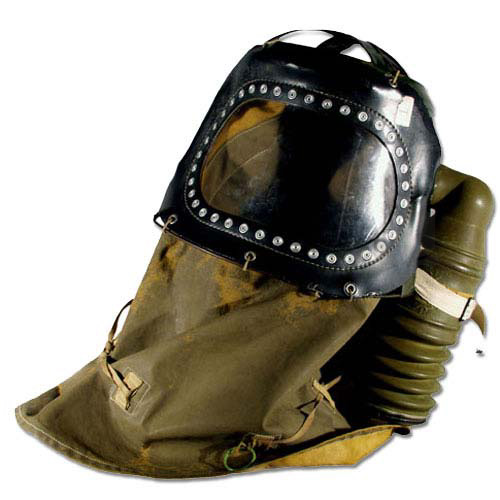
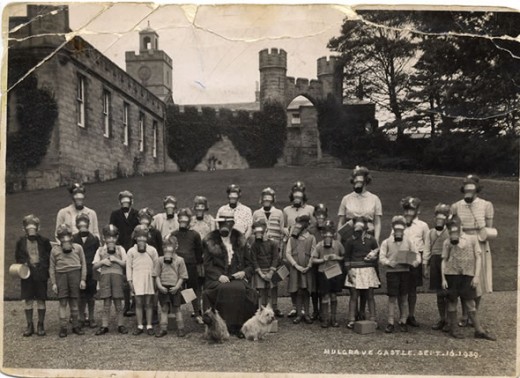
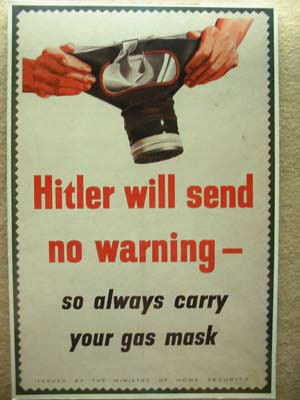
Personal protection
Gas weapons, including mustard gas and chlorine gas, had been used in the First World War, and in the Spanish Civil War in the late 1930s, by the Fascist General Franco.
The authorities in London feared that gas would also be used in the attacks on Britain, and prepared to defend the population from gas attacks.
Before the war had even began, every man, woman, and child was issued with a gas mask, and it was mandatory for them to be carried or next to each person 24 hours a day.
Young children's gas masks were in a cartoon-guise, looking a bit like Mickey Mouse. This was supposed to calm children, but in fact, I think they look more scary than the adult versions.
Babies were issued with all-in-one type respirators. The baby had to be put inside the gas mask box, and a manual pump operated outside the box to give the baby air.
My maternal grandmother, Margaret Warwick, was issued with one of these when my uncle was born during the war, and it scared her deeply.
A photo of a baby gas mask is to the right of this text, and it's a pretty horrible thing!
The gas masks came in a standard brown box, with a strap.
My paternal grandmother, Violet Luxton, thought (as many women did) that these were ugly and over-utilitarian.
She and her sisters, therefore, made patchwork and crochet covers for the boxes, in order to pretty them up a bit.
Violet made, during the war, 3 covers in different colours - one to go with her nurse's uniform, and two to wear with civilian clothes.
Gas was never in fact used during bombing raids, and as the war went on, people stopped worrying about the possibility of gas attacks.
Posters went up, warning people that their gas masks ought to be with them all the time.
A lot of people, however, found the boxes rather handy to carry their purses, lunches, make-up, and house keys.
By 1944 or so, Violet Luxton reckoned very few people actually had their gas mask with them, but almost everyone still carried the box to avoid getting grief about not carrying it!

- People At War - What’s the story
A fascinating site with accounts of peoples' war-time lives, written by the people who lived them.
Blackout
From 1st September 1939, the Blackout started.
This was designed to make sure that the cities and towns were as dark as possible, so as not to give the Luftwaffe clues about where they were, and where their targets were.
Regulations were very strict. Every day had a designated "light-up" time, and from this moment onwards, until the morning, every scrap of light was supposed to be hidden.
Houses, flats, offices and factories all needed to have proper window coverings. These could include shutters which were thoroughly sealed, but most common were special curtains or blinds.
The government supplied thick black material, and this could be made into coverings for windows, in addition to more normal and attractive curtains.
The blackout was a major hassle. Curtains couldn't just be drawn, they had to be fixed to the window frames, otherwise chinks of light escaped around the edges. Many people had hooks on their curtains and nails on the frames, but putting the blackout up was a tedious business.
Both my grandmothers told me that many people just left it up all the time, particularly in bedrooms, as time was short and life busy enough that it didn't matter if the bedrooms were always dark.
The blackout didn't just cover all buildings. Street lights were turned off for the duration of the war, as were advertising sign lights and lit signposts.
Any vehicle driving at night had to cover its headlights, so that only a sliver of light came through the shield, and use special bulbs which gave out very little light.
Torches also had to be covered with paper, so that they were very dim. Initially, even torches weren't allowed, but the government relented on this by 1940, provided the torch was covered by tissue paper.
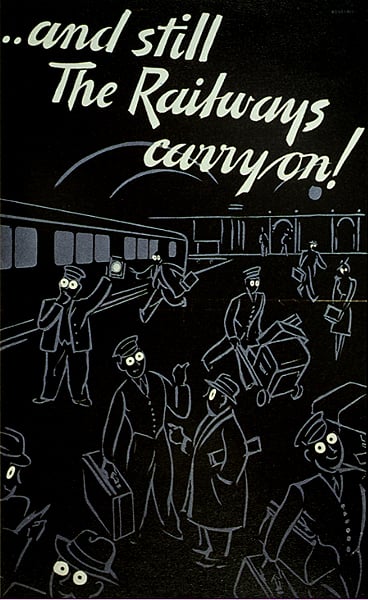
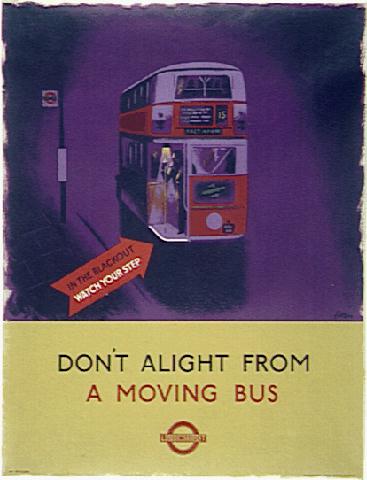
Each area's ARP warden (Air Raid Precaution) would patrol the streets at night, yelling "put out that light!" whenever necessary.
Penalties were fierce. Anyone found breaching the blackout could expect to be summonsed to the Magistrates' Court, convicted, and handed a hefty fine to pay.
Fines were set at a maximum of £500 per offence, and a prison sentence of up to 2 years was the maximum penalty.
£500 in 1940 is the equivalent in earnings terms of £67,166.07 now, or about $100,000.
The blackout carried dangers of its own. Many people were injured, falling over street furniture, wandering unknowingly into the roads, banging into street lamps and other people that they couldn't see.
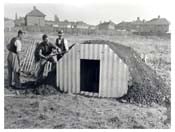
Air-raid shelters in the home
Different types of air raid shelters were available in the UK.
There were 2 types of shelters which could be fitted in people’s own homes, the Anderson Shelter was first produced in 1938, and was a structure made of steel panels.
The structure was half buried into the ground and covered with earth on top. They weren’t particularly big, they were 6 feet high, 4½ feet wide, and 6½ feet long.
They could be and often were kitted out internally with bunks, bedding etc. They were free for a household with an income of less than £250 a year, and cost £7 for those who earned more.
A total of 2.3 million Anderson Shelters were erected before and during the War.
For some people an Anderson Shelter wasn’t practical as they didn’t have a garden.
The Morrison Shelter was a type of indoor shelter, and was a kit to be bolted together. It was 6½ feet long, 4 feet wide, and 2½ feet high. It could be put under a table in a kitchen or living room, and was designed to protect the occupants if the house fell in around them.
Altogether half a million of these were installed before the end of 1941, and a further 100,000 once the V1 attacks started.
It worked fairly well, the only people who were killed or very seriously injured in Morrison Shelters were when the Shelters had not been installed properly, or the house had suffered a direct hit from a bomb.
Many people used cellars or cupboards under the stairs, often reinforced, as bomb shelters.
My grandmother in 1943 in Liverpool used her cupboard under the stairs, reinforced with steel planks, as an air raid shelter for herself and her infant son. Her husband was away in the Far East as a Captain in the Royal Navy.
My Grandmother was bombed out, a direct hit happened on the house 2 doors along, and her house more or less collapsed around her. She was dug out by a rescue squad from the ARP, and she and my uncle were in fairly good health.
A good percentage of her belongings survived, but the house had to be demolished. My granny was injured though, and her knee in particular was badly damaged by some stray debris.
- A Wartime Home
A wartime home. An exact copy of a real family's wartime house. Take a virtual tour and find out about the objects in each room by moving the mouse around the screen.
Public air-raid shelters
Public shelters were also built at places along public streets in cities. They often were half underground, and often had bunks and chairs and tables installed.
A variety of tunnels across the country were also used as air raid shelters. Tunnels such as the Victoria Tunnels in Newcastle, or specially built air raid tunnels in Stockport, were used by thousands of people. Natural cave systems such as the Chislehurst Caves south-east of London were also used.
Tube stations used as shelters
Originally the Government was resistant to the use of underground stations as air raid shelters. There was a fear that the stations would be unsanitary, and that people would stay permanently in the stations and tunnels because air raids were so frightening.
People tended to use these tunnels and stations as shelters whether the Government approved or not, and the Government adapted.
In September 1940 the branch line of the Piccadilly Line from Holborn to Aldwych was closed as a tube line temporarily, and toilets, bunks, canteens and chairs were fitted, and shelter marshals appointed.
Altogether 79 stations were fitted out to be air raid shelters, including 50,000 bunks.
They were not perfectly safe, there were incidents where bombs scored a direct hit on tube stations and killed the people inside them. The highest death toll was at Bethnal Green tube station in March 1943, when 174 people were crushed to death.
- The Evacuees Reunion Association, ERA
An organisation of children, teachers, and foster-parents involved with the evacuations of the war.
Evacuation
Starting on 1st September 1939, when the invasion of Poland meant that a British Declaration of War was imminent, well over three million children, mothers and infants, pregnant women, and disabled people were evacuated from cities, ports, and military area.
The plan, called Operation Pied Piper, involved trains and coaches of children in particular being taken from their homes to safe, rural areas.
They were away from the bombs - but also away from their parents, homes, relatives, and all that was familiar.
For more detail about children who were evacuated during the Second World War, click on this link.
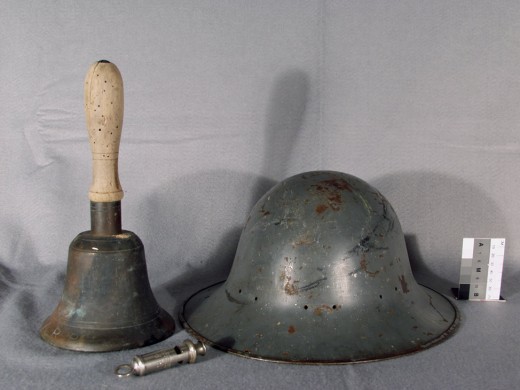
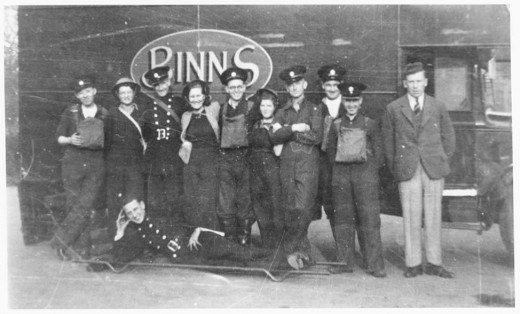
- The Cabinet War Rooms and Churchill Museum Home
The award winning Churchill Museum, set within the unique historic Cabinet War Rooms, combines cutting-edge technology; rare and significant historical objects dedicated to life of the greatest Briton
- Civilians' War
The Second World War Experience Centre - The Doolittle Raid Of Japan
A fascinating account of the first American air raids on Japan during the Second World War, following the attack on Pearl Harbour.
Air Raid Precautions (ARP)
Planning began seriously in 1935, in Autumn 1937 the Air Raid Precautions Act was passed, and suggested that up to 800,000 volunteers would be trained in to assist in organising the population during bombing campaigns.
The Civil Defence Act 1939 stated that the Civil Defence included any organisation that would try to minimise disruption from bombing, but that the Air Raid Precaution Organisation would be the foundation of it.
By mid 1938, about 200,000 volunteers had enrolled, and another half a million or so joined the organisation during the Munich affair in September 1938. By September 1939, there were more than 1½ members of the ARP.
The front line services for the ARP were air raid wardens. ARP posts were set up for each area, the size of the area depending on population density. Each post had between 3 and 6 wardens, who were local people and knew the area well. They needed to know the buildings, layout, and the people who lived in their area. In central London, there were about 10 posts, and 50 wardens, per square mile.
Air raid wardens were volunteers who had full-time jobs doing other things. When the air raid sirens went, however, their job was to try to make sure that no-one was on the streets. They would direct people to public shelters, patrol their areas to check during a raid (and therefore they were at high risk of injury), and to check on the shelters and make sure they were orderly and safe.
The wardens were trained in first aid, basic fire control, and were also responsible for enforcing the blackout.
After the War began, there were some full-time paid ARP wardens as well the vast army of volunteers, but the backbone of the service was always the voluntary workers.
ARP wardens were issued with armbands to identify them, steel helmets with “ARP” stamped on them, a bell, whistle and rattle.
Many of the wardens were very brave, and stayed unflinching out in the streets during bombing raids. The full-time wardens were paid £3 a week (men) and £2 a week (women) and their work shifts were 72 hours a week, in six 12 hour shifts.
As well as the wardens, the ARP included Rescue and Demolition Services, who would attend bombed buildings to try to support bombed structures, recover casualties and dead bodies, get rubble out of the road so that the fire and ambulance services could get through, and then either prop up or demolish dangerous buildings.
First Aid Parties were given training beyond the first aid wardens had been instructed in, and were also stretcher bearers.
Ambulance Drivers did the obvious, and this was an extremely dangerous job, driving through bombing raids in the blackout to take injured people to hospital.
There were also Decontamination Squads who were set up to deal with any gas attacks, and Communications Teams who coordinated the various posts.
There were also general duties, which included telephone operators, typists, and other similar jobs.
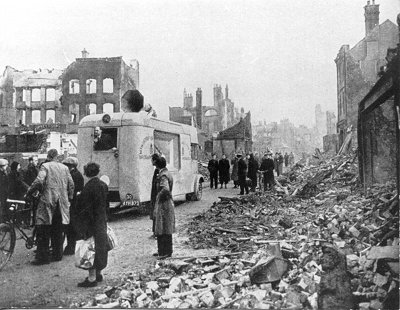
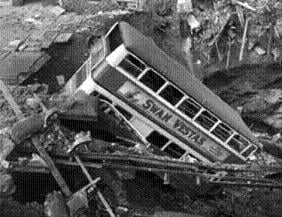
The Women’s Voluntary Service (WVS)
The Women’s Voluntary Service was formed in 1938, at the request of the Home Secretary. It was, as the name might suggest, an organisation recruited from women who wanted to help with the war effort.
Originally it was a Civil Defence ARP type organisation, as the War went on, their remit expanded.
The biggest early task undertaken by the WVS was in relation to evacuees. Members of the organisation went with trains and buses of children to their eventual destinations, allocated and supervised billets for the children, and kept an eye on the ongoing placement of evacuees with families in safe areas.
The WVS also ran clothing banks, set up canteens for soldiers at stations and bases, and organised sock knitting and glove knitting groups for soldiers.
One of the WVS’ main jobs was to deal with casualties from air raids. As the air raids finished, the WVS with their vans and carts would attend bombed areas, and organise emergency shelter in church halls or primary schools for people who had been bombed out, replacement of ration cards (without which no person could be fed or clothed) and emergency replacement clothing for people who had lost everything.
They also fed as far as possible volunteers who were working to deal with the consequences of air raids.
The WVS was not a safe part-time experience. 242 WVS volunteers died while on duty during the war, and there were a total of 78 Empire Awards for Courage and Bravery, 2 British Empire Medals, and 5 George Medals.
After the war, the Service was given royal recognition and became the Women’s Royal Voluntary Service, and continues social charitable functions to this day.
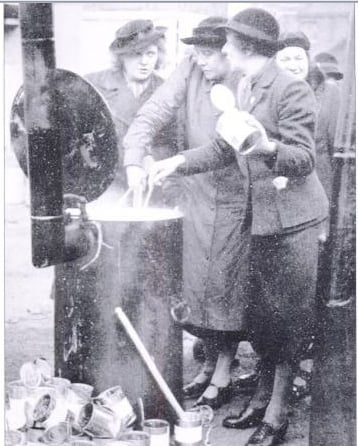
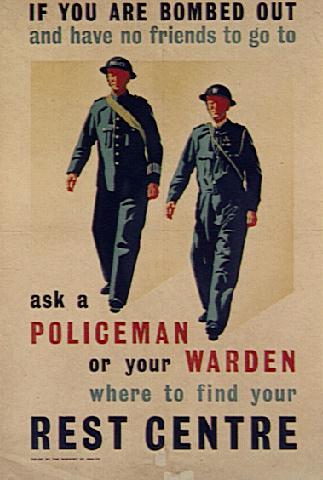
The Auxiliary Fire Service (AFS)
The Auxiliary Fire Service was set up in 1938, and consisted of volunteers who were principally fire fighters but were also trained in first aid.
Its members had full-time jobs elsewhere, but during the War they were an important frontline defence against fires caused by bombing raids.
During the Blitz, 860 members of the Auxiliary Fire Service were killed, and 7,500 seriously injured.
They were very short of equipment, and lots of London’s iconic black taxis were requisitioned, painted green and grey, and turned into makeshift fire engines.
Fireguard messengers
Fireguard Messengers were children volunteers aged between about 14 and 18, who operated as messengers during bombing raids to take messages between ARP groups, the fire service, the ambulance service, and other volunteers.
These children would either run or cycle through raids in order to get important messages through.
This was similarly a very dangerous job, but something children who volunteered did with courage.
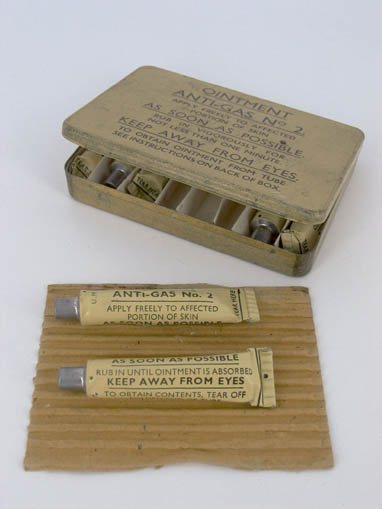

"There's a war on, you know"
My grandfathers both spent almost all the war abroad. My Dad's father was in a tank regiment, in the Middle East, and then in Italy. My Mother's father was in the Royal Navy, and spent 4 years in the Far East.
My maternal grandmother was bombed out once, and caught in a surprise air-raid during the day with her then 8 week old son, who was injured by a flying bit of slate from a roof. She just got on with it (and my uncle is alive and well to this day!)
My paternal grandmother was a Matron in the Woolwich Children's Hospital, and spent 2 nights a week on the roof of the hospital, pushing incendiary bombs off the roof, and watching for planes.
The Second World War wasn't fought just by men in uniforms abroad. It was fought by the men and women who worked all day, then spent 2 or 3 nights a week patrolling through air-raids, putting out fires, digging people out of bombed houses, driving them to hospital, and comforting those who had suffered from the bombs.
It was fought by the children sent away from their parents, and by the teenagers who cycled and ran through aid-raids to carry messages, and the people who organised services for the bombed out.
It was fought by the people who held sing-songs in tube stations and public shelters when the noise was too much to sleep, and who sang of how "There'll always be an England", "Land of Hope and Glory", and rude songs about the enemy, such as the... classic... "Hitler has only got one ball".
Above all, it was fought by the people who watched, heard and feared bombs falling over their heads, night after night, and who got up in the morning, came out of the shelters, propped their eyes open with a cup of tea, and got on with their lives anyway, making sure the war was won.

![Carve Her Name with Pride [DVD]](https://m.media-amazon.com/images/I/51h2OH+wWWL._SL160_.jpg)
